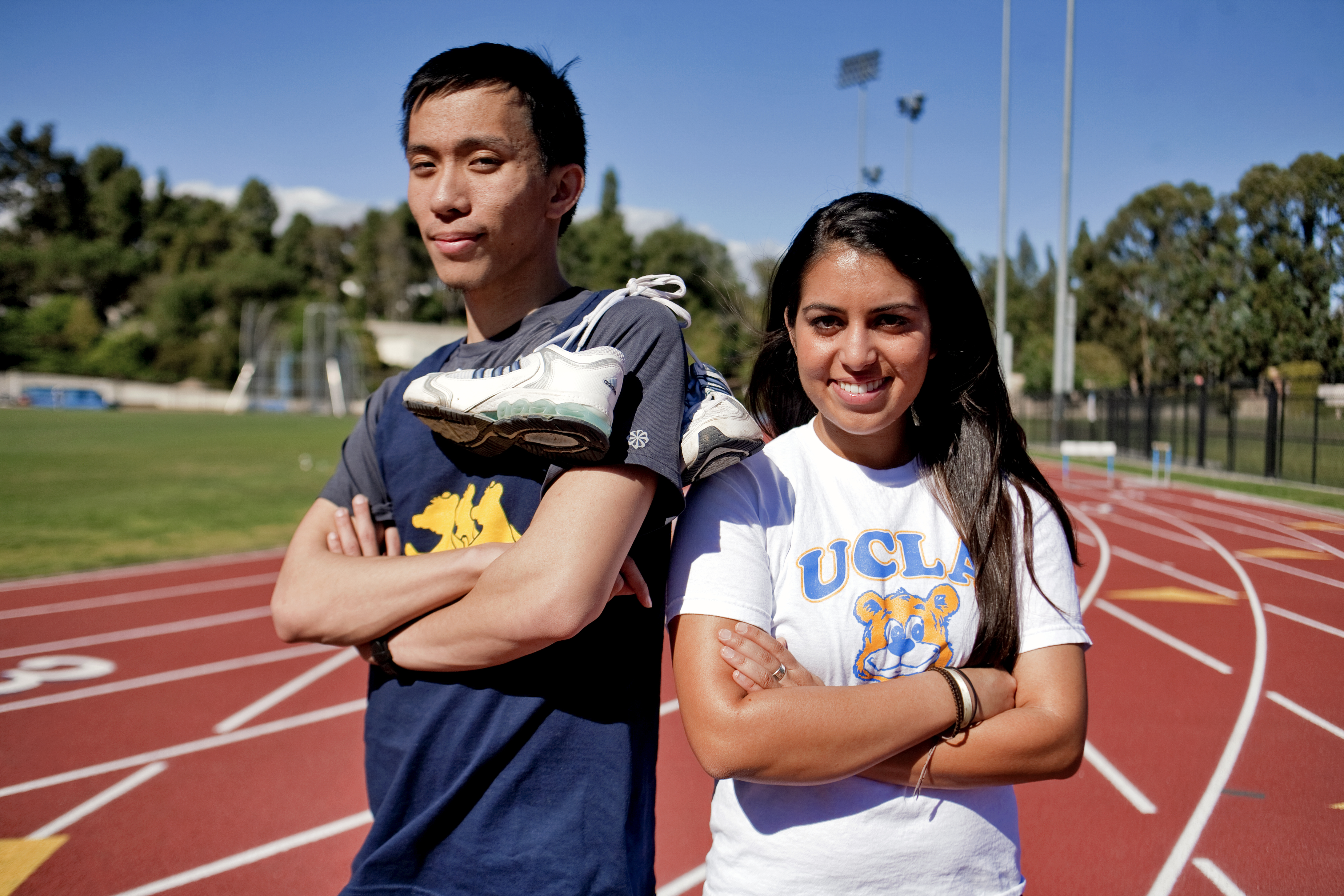Correction: The original version of this headline contained an error.
Roland Azurin will run his fifth marathon next month with an empty water container on his back. He aims to collect money for the nonprofit organization Charity Water, before and all throughout the 26.2-mile run.
The second-year biology student and member of Bruin Runners decided at the beginning of the school year to organize a group of students interested in running in the 2011 Los Angeles Marathon. Finishing the race will bring him closer to his goal of running 26 marathons in 26 years ““ one for every mile in a single event.
Mona Nejad will also be running in the marathon but with a different goal in mind. Having met other people her age who had completed marathons, the second-year psychobiology student decided to run one before she turns 20 years old.
Nejad and Azurin are two of about 20,000 people expected to run the L.A. Marathon in late March.
Azurin ran his first marathon as a high school student in 2007. Last September, he joined Bruin Runners and organized the Bruin Runners Marathon Committee, which is made up of students who want to run the L.A. Marathon. He currently serves as the marathon chair for the committee.
Azurin also came up with the idea to raise money for Charity Water. So far, Bruin Runners has raised about $60, but he hopes runners will contribute more during the marathon.
“Whatever money we raise, we give it to them, and they use it to build clean water wells in developing countries … I thought that would be a nice thing to run for,” Azurin said.
While Nejad swam and played soccer in high school, she has never really considered herself a runner. She became interested in participating in a marathon after running with a friend who did cross country and soon found herself completing three-mile runs on a track.
Both Nejad and Azurin said training in preparation for the 26.2 mile run takes serious time commitment.
“It’s like adding another class,” said Nejad, who has been training since September by running between four and eight miles at least four times a week.
On Sundays, Nejad does longer runs. She started out at around six miles and hopes to run 21 this weekend. She admits the training is not easy but said it comes down to focus.
“It’s all in your head … the biggest obstacle is your mind,” she said.
Azurin also said it is difficult to fit training in his schedule, but he still runs every day and sets goals for himself and the group each week.
Although both students try to train safely, there have been injuries. Azurin said he has to cope with constant knee problems, and Nejad said she tore her tendon in her foot. She opted to continue with her training and wore insoles to help with the injury.
“She’s able to run through the pain,” said Diane Edde, a third-year psychology student and Nejad’s running partner. “She’s the most determined girl.”
Competition is not the driving force for either student. For Azurin, the best part of the marathon is the scenic route that the organizers choose each year.
“When you’re competitive, you don’t get to see L.A.,” Azurin said, adding that he likes to take his camera with him and take pictures every few miles.
Nejad is eager to see the progress she has made in the past few months.
“It’s exciting to see how far I’ve come,” she said, recalling how she started out by running a few miles each week. “(Finishing the marathon is) within my reach.”
So after completing the marathon, what’s a Bruin to do?
Keep running of course.
Azurin said that he plans on completing what will be his sixth marathon next year and hopes to compete in the Iron Man triathlon at some point.
He’d also like to continue raising money for different charities during each race.
Nejad said she is excited to see how this marathon goes but has learned one thing for certain throughout her preparation.
“I don’t plan to stop running,” she said.
